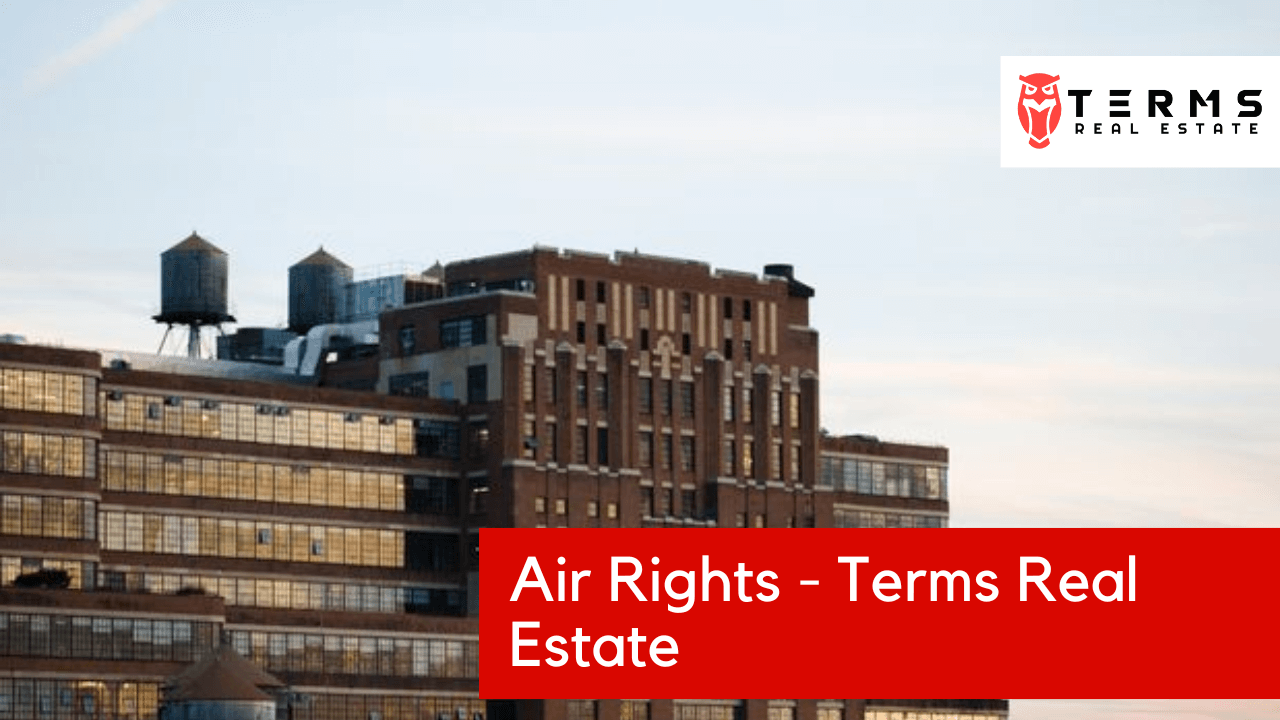Urbanization of city centers is one of the significant trends impacting the real estate industry in recent times. Urbanization leads to busier and more densely-populated cities. This creates the problem of limited space. Now, economics teaches us that shortage of a commodity, whatever it maybe leads to an increase in its price. It is easy to see how limited space in urban centers creates an opportunity for investors to make profits.
One of such real estate investment opportunities is Air Rights. You heard, right! Let’s go ahead and discuss this fantastic investment opportunity that is making headlines all around the world.
What Are Air Rights?
In congested city centers such as New York, the property owners also own the rights to the air space above their property. Property owners may choose to develop their air space (excluding flight routes for planes) as they desire. Property owners may also want to lease or sell their air rights as they would mineral or surface rights.
Air rights originated in New York and is the main reason for the dramatic transformation of the city’s skyline from what it was a few decades ago. Air rights are also responsible for the development of Lower Manhattan in the 1960s. Air rights can promote urban development and shape a city. In short, air rights add value to the existing property. Let’s see how.
How do air rights add value?
Okay, now that we have a gist of what air rights are, we can then move on to discuss how these rights add value to real estate.
Air rights, especially in large cities, lead to future property development. Such future events generate income and produce positive cashflows. Selling a one-story building with air space allows it to develop five more floors. These additional floors are additional revenue sources that must are essential when valuing a property.
That’s why it is essential to consider a property’s air rights when buying or selling real estate. Analyzing the developmental potential of a property’s air rights allows you to value it correctly.
Investors in air rights customarily face difficulty when securing a mortgage due to a lack of collateral. This is because unlike buildings, air rights are intangible. So, in the event of a foreclosure, banks have no tangible asset to receive in return. Again, this poses another difficulty concerning the valuation of air rights.
Example of air rights
During an assessment carried out by TIR on a skyscraper in the Chicago Central Business District, they emphasized the importance of considering a property’s air rights when determining its value.
The layout of the skyscraper used in this study was structured; thus: two retail spaces on the first two levels, about a dozen levels of garage space and office spaces on the upper floors. This assessment aimed to determine the value of the upper office-space floors. To resolve this, the TIR made use of the sales versus revenue approach.
This approach incorporates air rights and other ownership rights when calculating the value of a property. By using the IRR, they were able to determine the value of the land itself. Then the IRR was subtracted from the sales value of comparable properties. The result of this assessment showed that air rights accounted for 78-90% of the total amount of the property. This shows a more substantial proportion of the value of an empty piece of land comes from the number of floors that the property to be built on the earth can have. Thus, the more the number of stories, the higher the value.
Taking Advantage of Air Rights
Air rights are most valuable in densely-populated and urbanized areas. As an investor, you should look to purchase properties in areas undergoing urbanization. As urbanization leads to limited space, the value of your property’s air rights will increase.
San Diego is an area to watch as the city has attempted a couple of urbanization efforts over the years. The building of Horton Plaza during one of such efforts sparked a transformation process throughout the entire Gaslamp district. The increase in the number of tourists and locals that frequented the area led to the rise in nightlife. Eventually, restaurants and shops opened, and the area further developed.
The development of Petco Park is another urbanization effort that helped to transform the East Village. The expansion of the convention center spurred economic growth, leading to more jobs, and the increased need for living space.
Recently, there have been developments aimed at revitalizing the C-Street Corridor. This area that has struggled to secure economic investment over the years is finally gaining traction. The projects to rebuild the old California Theatre into a modern mixed-use residential building and to renovate the Civic Centre are all urbanization efforts that will eventually lead to scarcity of space.
As an investor, these numerous urbanization efforts make the San Diego area ideal for real estate investing. And when you factor in the value of air rights, it is impossible to ignore opportunities like this.
Transferring Air Rights
Anyone who has been to SoHo on a Saturday understands just how densely populated New York is. Being one of the densest and most expensive cities in the world, owning and selling air rights in this city can be extremely lucrative. Transferring air rights can be done in one of three ways.
Zoning Lot Mergers
These are the most common method of transferring air rights and mainly take place in Manhattan, south of Central Park. Here, the owner of an underdeveloped property with unused development rights can link his estate to the development of an adjacent property or lot to allow the developer to erect a taller building than would have been originally possible. This transfer method does not need approval from any city officials or departments. It allows the owner of the undeveloped property to make profits from the sale of his/her air rights. Zoning lot mergers help the planning and development of historically least-built neighborhoods.
District Special-purpose Transfers
This method is used in areas considered by the city as “special-purpose districts.” It allows for the transference of air rights between non-contiguous regions. Usually, this type of transfer must be approved by the city as it is used in cases where the area has a specific purpose. Examples of special-purpose districts include the Special West Chelsea district near the High Line, and the Special Hudson Yards district, among others.
Landmark Transfers
This form of air right transference involves properties marked as historically or culturally significant by the Mark Preservation Commission. Usually, the NYC zoning code allows the exchange of air rights between areas featuring LPC designated landmarks and other properties looking to develop the land. With this method, the two properties can be across the street from one another and do not have to be contiguous.
Usually, landmark transfers require that development takes place in less-dense neighborhoods with unused rights due to poorly constructed landmarks. A significant advantage of this method of transmission is the fact that landmark properties may sell only their remaining air rights.
The role and impact or air rights in real estate investing cannot be undermined. Increasing urbanization efforts in the U.S. and around the world make air rights more valuable in the future. Air rights are seen as a gamble, but one thing is sure – wherever there are urbanization efforts, investors can expect to see a soar in the value of air rights.



